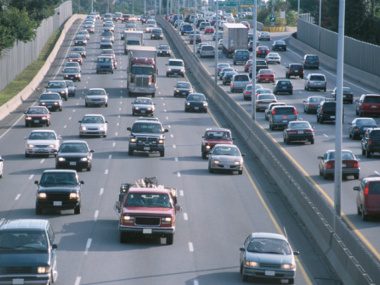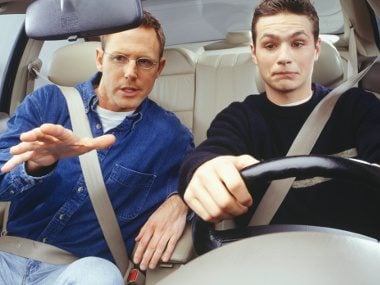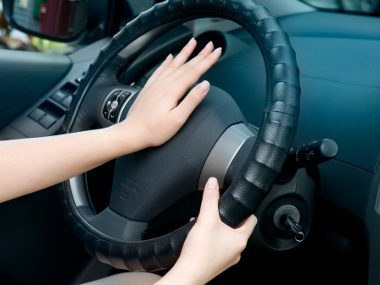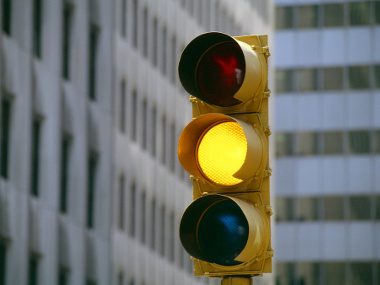
Habit #1: Look Well Ahead
Just like looking into the future, keeping your eyes ahead will help prepare you for just about anything. That means focusing on the road 12 to 15 second in front of you in the city, and 20-30 seconds on the highway. (This translates to one block ahead in the city, and about a kilometre ahead on the highway.) “It’s almost like looking into a crystal ball,” says Angelo DiCicco with Young Drivers. “You need to project yourself into the future.” In order to stay focused on what’s ahead, it’s essential to keep focal point on the road, and not on any distractions like a cell phone, radio or other passengers.

Habit #2: Move Your Eyes
If you’ve ever sat transfixed in front of a TV, you’ll know that it’s easy to tune out what’s happening around you. That’s why moving your eyes between your left, right and rear-view mirror helps to keep your peripheral vision open. “Getting in the habit of moving your eyes will get you in the habit of scanning where the dangers can come from,” says DiCicco. The general rule is to check the rear-view major every five to eight seconds, and then look left, centre, as you approach an intersection.

Habit #3: Keep Space
The idea of keeping a sense of “personal space” should also be applied to the roads. That means keeping a car-span of space behind, in front and when possible, on both sides of you. The habit of spacing your vehicle out, or keeping staggered, is important in avoiding collisions. If you have about two seconds in front of you, making a sudden stop will allow enough time for the person behind you to stop and give you enough space not to rear-end the vehicle ahead of you.

Habit # 4: Spot the Problems
A driver has to make 140 driving-related decisions during one trip – and that’s on a smooth ride. Of the thousands of vehicles you’ll pass in a day, most of them won’t cause any problems. However, it’s important to be alert and aware – by practicing the previously mentioned tips – of where the potential problems might come from.
These “spidey senses” come naturally to drivers over the years, says DiCicco. “Pick out in live time which of the things are on the road that have the potential to go bad,” he says. “It’s learning how to sort.”

Habit #5: Communicate Proactively
Communicating with other drivers and pedestrians can be done efficiently with the use of a horn. But there’s a fine line between being proactive on the horn, and reactive. A quick tap will stop a person with their hoodie up and earphones in, for example, from stepping between two cars. Or get the vehicle in front of you to move ahead if they’re stopped at a green. Yet, laying on the horn to vent frustration after a close call is not a useful way to communicate. Don’t abuse the horn. A gentle and quick tap will do.

Habit #6: Park Defensively
Good driving isn’t exclusive to the roads – it also applies to parking lots. An ideal way to park in a lot, according to DiCicco, is to find a spot that allows you to come out front-end first, rather than back out. “Don’t back out of a controlled space into an uncontrolled space,” says DiCicco. He also suggests parking under a street light at night, when possible. This provides extra safety, thanks to the visibility, and makes it easier to find your keys. Avoid parking at the end of a row in a parking lot, since there’s a higher risk of being hit by passing cars or getting bumped by loose shopping carts.

Habit #7: Don’t Make the Decision at the Point of No Return
When you’re approaching a traffic light, make sure you have enough time to pass through when it’s green, as opposed to yellow. Passing on a red is completely out of the question – not to mention illegal. “You need to make the decision to speed up or slow down before the light turns amber,” says DiCicco. Going through a red light will result in demerit points and a ticket – it also puts other drivers and pedestrians at risk. So make your decision about stopping at a red light while it’s still green.
For more information, visit the Alberta Motor Association’s website.